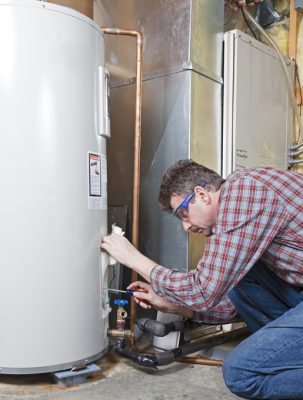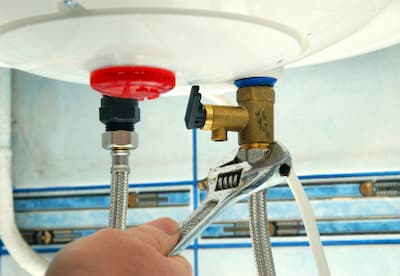Effective Techniques for Maintaining Your Home's Hot Water System
Effective Techniques for Maintaining Your Home's Hot Water System
Blog Article
How do you really feel in relation to What Kind of Maintenance Do Water Heaters Need??

Warm water is vital for day-to-day convenience, whether it's for a refreshing shower or cleaning dishes. To guarantee your warm water system runs effectively and lasts much longer, routine upkeep is crucial. This write-up offers functional pointers and understandings on exactly how to keep your home's hot water system to stay clear of disturbances and pricey repairs.
Intro
Maintaining your home's hot water system could seem complicated, but with a few easy actions, you can ensure it operates efficiently for years to find. This overview covers everything from comprehending your warm water system to do it yourself maintenance ideas and recognizing when to hire expert aid.
Significance of Preserving Your Warm Water System
Regular maintenance not just expands the lifespan of your hot water system yet additionally ensures it runs efficiently. Overlooking upkeep can bring about decreased effectiveness, greater power bills, and even early failure of the system.
Signs Your Hot Water System Demands Upkeep
Knowing when your hot water system needs interest can avoid major problems. Watch out for signs such as inconsistent water temperature, weird noises from the heater, or rustic water.
Comprehending Your Warm Water System
Prior to diving right into upkeep jobs, it's helpful to understand the basic components of your hot water system. Generally, this includes the water heater itself, pipes, anode rods, and temperature controls.
Monthly Maintenance Tasks
Regular monthly checks can help catch minor issues before they escalate.
Flushing the Hot Water Heater
Purging your hot water heater eliminates debris accumulation, enhancing effectiveness and extending its life.
Checking and Replacing Anode Rods
Anode rods avoid deterioration inside the container. Evaluating and changing them when worn is vital.
Checking and Adjusting Temperature Level Setups
Adjusting the temperature level setups guarantees optimal efficiency and security.
DIY Tips for Upkeep
You can carry out several maintenance jobs on your own to keep your warm water system in top condition.
Looking for Leaks
Consistently examine pipelines and connections for leakages, as these can result in water damage and greater bills.
Examining Pressure Alleviation Valves
Testing the stress relief valve guarantees it functions appropriately and avoids extreme pressure buildup.
Shielding Pipes
Shielding hot water pipes lowers warm loss and can save power.
When to Call a Professional
While DIY maintenance is valuable, some issues call for professional know-how.
Complex Issues Calling For Expert Help
Examples consist of significant leaks, electric problems, or if your water heater is regularly underperforming.
Regular Professional Upkeep Advantages
Specialist maintenance can include detailed evaluations, tune-ups, and making certain compliance with security criteria.
Verdict
Regular upkeep of your home's warm water system is important for effectiveness, long life, and cost savings. By adhering to these tips and knowing when to seek specialist aid, you can guarantee a trustworthy supply of warm water without unanticipated disruptions.
Water Heater Maintenance: The Basics
Maintaining your water heater will ensure it operates efficiently and has a longer lifespan. Neglecting regular maintenance can lead to costly repairs and an even bigger chunk of your savings if you have to replace it sooner than necessary. But there’s good news: Most water heater maintenance tasks are relatively simple and easy for homeowners with basic DIY skills.
Flush the Water Heater
Over time, sediment and minerals can build up in the tank, reducing its efficiency and potentially causing damage. To flush the tank, turn off the power or gas supply, attach a hose to the drain valve near the bottom and open the valve to drain the water until it runs clear. Ideally, flush the tank annually.
Replace the Anode Rod
The anode rod is a sacrificial metal rod that helps prevent corrosion inside the tank. Inspect and replace it every three to five years or per the manufacturer's recommendation. To replace the anode rod, turn off the power or gas supply, drain a few gallons of water from the tank, unscrew the old rod and replace it with a new one. If the anode rod is significantly corroded or covered in calcium buildup, it's a sign the water heater may need to be replaced soon.
Tune-Up
A yearly tune-up can help identify potential issues and ensure your water heater operates at peak efficiency. This typically involves checking the thermostat, burner assembly (for gas heaters) and any other components specified by the manufacturer. During a tune-up, the technician may also clean the burner and adjust the pilot light (for gas heaters) or examine the heating elements (for electric heaters).
How to Maintain Your Water Heater
Insulate the tank. Insulating the tank can improve energy efficiency and reduce heat loss, saving you money on energy bills. You can purchase precut insulation blankets designed specifically for water heaters or use standard fiberglass insulation wrapped securely around the tank. Check the temperature. The recommended water temperature for most households is around 120 degrees Fahrenheit (49 degrees Celsius). Higher temperatures can increase energy costs and potentially cause scalding. Use a kitchen thermometer to check the temperature at the faucet nearest the water heater. Monitor water pressure. Excessive water pressure can strain the water heater and cause leaks or even tank failure. Install a pressure-reducing valve if necessary. The ideal water pressure range is between 60 and 70 PSI (pounds per square inch). Test the temperature and pressure (T&P) relief valve. The T&P relief valve is a safety feature that releases pressure if the tank gets too hot or the pressure builds up too high. Test it annually by lifting the lever and allowing a small amount of water to release. Replace the valve if it doesn't release water or reseal properly. Check for leaks. Regularly inspect the tank, pipes and fittings for leaks or corrosion. Deal with issues promptly to prevent further damage. Even a small leak can lead to significant water damage over time. Consider a tankless water heater. If your traditional tank-style water heater is nearing the end of its lifespan ( typically 10 years), consider replacing it with a tankless water heater. These units heat water on demand, reducing standby energy losses and potentially saving you money on your energy bills. Schedule professional maintenance. While homeowners can perform many water heater maintenance tasks, it's still a good idea to schedule professional maintenance every few years. A plumber or HVAC technician can thoroughly inspect the unit, identify potential issues and ensure it operates safely and efficiently. https://www.homeserve.com/en-us/blog/home-improvement/hot-water-heater-maintanence/

Do you really like reading up on What Kind of Maintenance Do Water Heaters Need?? Place feedback further down. We would be happy to see your reactions about this blog posting. Hoping that you visit us again later on. I beg you take a moment to promote this content if you appreciated it. We appreciate reading our article about Tips For Maintaining Your Hot Water Heater.
Here Report this page